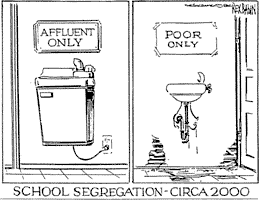Women, Infants, and Children is a program that formally began in 1972 as an addendum to the
1966 Child Nutrition Act. It provides for the nutritional needs of pregnant and post-partum women, children under age 5, and infants, found to be at risk for malnutrition. The risk is usually attributed to lack of finances sometimes in combination with a medical condition.
WIC is a rare breed of government programs, one that anticipated the needs of the population. Obviously malnutrition was an issue at the time tat the Child Nutrition Act of 1966 and then WIC came about, but this program also has grown as a greater percentage of households are single-parent. Today more than 25% of all families are considered single-parent. Many regions, including Washington D.C., report the majority of the single-parent households to have women parents. In 1960 only 15% of women with young children even worked outside of the home. Today, be it for necessity or for a career, more than 50% of all mothers of young children work outside the home.
The ability of women to separate from abusive situations is a positive effect of the increased social acceptance of the single-parent home, and this acceptance undoubtedly improves women’s lives. Part of this acceptance is due to the goals of the
Women’s Liberation Movement. However great it is that single mothers no longer bear a Scarlet Letter in the U.S.A., it is still a reality that it can often take weeks for a postpartum mother be able to return to work, yet not working risks their very means of survival. According to the
National Center for Children in Poverty about 60% of single parent households are considered low-income. This makes these families dependent on the nutrition provided by WIC.
WIC is found in every state, commonwealth, Native American Nation, etc. WIC was cut $500 million in the national budget cuts. Below are a few stories about how that is affecting the population in various regions.
Idaho
Illinois
Massachusetts
Maryland
Ohio
New York
Texas





